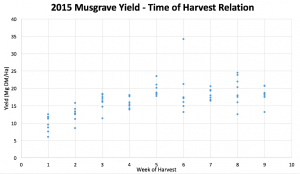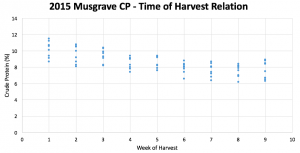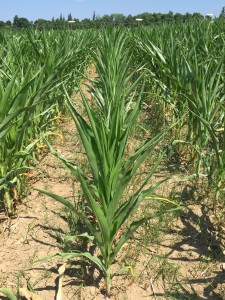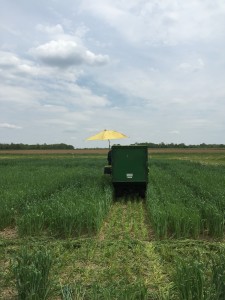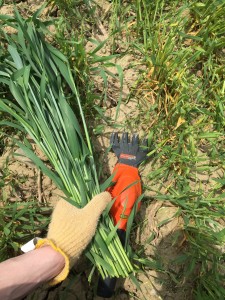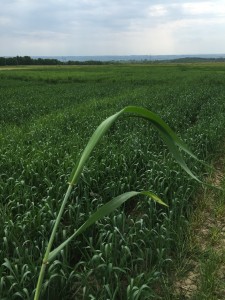Forage sorghum is not always harvested for the highest yield, sometimes the quality of the sorghum is also an important factor that farmers will consider when making the decision of harvest. Time of harvest can decide trade-offs between yield and quality, so I paid attention to this topic in my summer internship.
Generally, the sorghum yield tends to increase as the harvest time is delayed. This increase might be attributed to the longer time of dry matter accumulation in sorghum tissues. However, the yield will finally reach a plateau where the later harvest does not result in a significant increase in yield due to the maturity of the plant.
On the other hand, the change of sorghum quality may have different trends. The crude protein content tends to decrease as the sorghum reach maturity, while the lignin content tends to increase as the harvest is delayed. The crude protein is important to the nutritious value of the feed, high crude protein content in sorghum feed may relatively reduce the need of other protein supplement. The lignin content partly determines the digestibility of the forage, too much lignin will reduce the digestibility and thus lower the quality of feed.
To balance the yield and quality, farmers need to decide the time of harvest to gain the most suitable forage according to their own needs. For example, when there are other available sources of crude protein, the crude protein in sorghum forage might not be that important. Then farmers may choose to pursue higher yields by waiting longer. Yet if farmers do treasure the crude protein in sorghum and want higher digestibility, then they may sacrifice certain amount of yield in exchange for better quality.
Anyway, farmers will make decisions according to their own situations. What I can do in my summer intern is to figure out trends of yield and quality change as the harvest time changes. By offering some information that can help to the process of decision-making, I can also slightly contribute to the actual production.

